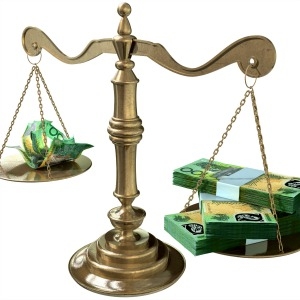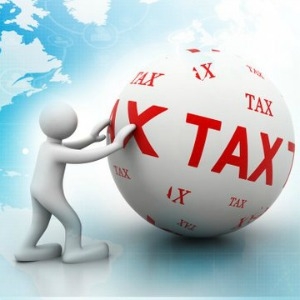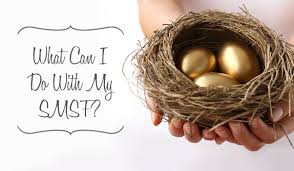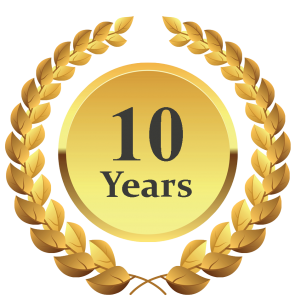|
Now you can buy your first home with your super - 9 steps you need to know If you think building your super is only for retirement years, well that's not anymore true, well at least not after 13th December 2017. As on that date, new laws were enacted, TLA (Reducing Pressure on Housing Affordability Measures No 1) bill 2017 & First Home Super Saver Tax Bill 2017, where super could be withdrawn to purchase your first home. 
New laws allows you to withdraw your contributions and income earned on it, before retire or before it is given to beneficiaries before you die. Super monies can now be withdrawn to purchase your first home provided certain conditions are met. Generally super funds follow the "Sole purpose test" section 62 of the Superannuation Industry (Supervision) Act 1993 (SISA 1993) (SISA) that ensures that trustees of regulated superannuation funds maintain the fund solely for core (retirement benefits) & ancillary (death benefits) purposes. There is one tiny ancillary purpose (Section 62 (1) (b) (v) of SISA), which allows the regulator to approve special withdrawals - this new law uses this tiny bit of legislation that allows you to make a withdrawal from super before you retire. Cashing of a benefit for First Home Super Saver Scheme (FHSSS) by super funds is allowed under SIS Regulations sub - regulation 6.19 (3) where the cashing of restricted non-preserved benefits is done in the manner specified in Schedule 1 to the SISR 1994. That is, where the trustees of super funds must respond to a release authority issued by the regulator and must release superannuation interest of a member to the ATO who then disburses it to the member. With house prices high, Australians are entering the housing market later in life as they are finding it difficult to save for a deposit for their first home. The FHSS Scheme is intended to help Australians save a deposit, pre - tax, for their first home inside superannuation and reduce pressure on housing affordability.
ADVERTISEMENT
Do you want to try Australia's leading SMSF Auditing Tool? - Audit 5 Funds for FREE
|
| Seminar : Let us show you... How to reduce SMSF Audit time in half! - 6 CPD hours in SMSF Audit |
|
Venue : Suite 3.04, Level 3, 29-31 Solent Circuit Baulkham Hills NSW 2153 |
|
Date : 14th June, 26th July, 23rd August, 18th Sept & 9th Oct |
|
Venue: Melbourne Stamford Plaza Hotel - City Date: 16th August 2018 Venue: Brisbane Stamford Plaza - City Date: 30th August 2018
Timings : 09:30 am to 04:30 pm |
|
Cost: The fee for seminar is $165 Incl. GST and is tax deductible(Plus Travel). Includes 10 audits worth $187 Incl. GST |
Step 6. Order how Contributions are counted

Contributions that are to be included in the FHSS releasable contributions amount are relevant - contributions are counted in the order in which they were made (that is, from earliest to latest) to the super fund – this means that contributions you make in an earlier financial year are counted before contributions in a later financial year. Contributions you make within a financial year are counted in the order you make them.
A simultaneous contributions rule applies – this means that if you make an eligible concessional contribution and an eligible non-concessional contribution at the same time (for example, in the same payroll process), your non concessional contributions are taken to be made first.
Prioritising earlier contributions will generally maximise the amount of associated earnings that are calculated in respect of your contributions. Treating non-concessional contributions as being made first maximises your FHSS maximum release amount because the non-concessional contributions are not discounted.
Once the contributions that are counted towards your FHSS releasable contributions amount have been identified, earnings associated with those contributions are calculated for each of the contributions on a daily basis. The calculation of earnings will be done by the ATO as part of the determination process.
An FHSSS amount can be released from a fund where the contribution may or may not have been made. Where the super interest is released from is up to you and you make that choice when you request ATO to release based on a determination issued to you.
Step 7. What happens after release
If you do not purchase your first home within 12 months of receiving the released amount you can either re-contribute the net amount (after withholding tax) received into superannuation, or pay an amount of tax (the first home super saver tax) to unwind the concessional tax treatment that applied on release.
Any release amounts that are calculated by reference to your FHSS eligible non-concessional contributions are treated as Non Assessable Non Exempt (NANE). however any amounts related to your FHSS eligible concessional contributions and the total associated earnings calculated in respect of any contributions are taxed at your marginal rates, but with a tax offset of 30 per cent. Amount included in assessable income is referred as ‘assessable FHSS released amount’.
The tax offset is neither refundable nor able to be carried forward.
Example:
Mary in the above example had made voluntary contributions of $15,000 as concessional contributions in 2017/18 financial year. In the following year, assume her employer contributes $16,000 as SG Contributions for her. Further, she enters into a salary sacrifice arrangement with her employer where the employer will deduct $1,000 a month as salary sacrifice pre- tax and $500 a month after tax (non-concessional contribution) and contribute to her SMSF.
Total contributions made for her are
SG Employer Contributions $16,000 (compulsory super) made by her employer;
Voluntary Salary Sacrifice Concessional Contributions $12,000; and
Voluntary Salary Sacrifice Non-Concessional contributions $6,000.
Total Contributions = 35,000
Maximum FHSSS contributions can be $15,000 per year and compulsary super is excluded.
Hence out of the $18,000 voluntary contributions, maximum $9,000 out of $12,000 can be concessional contributions (as the employer has already contributed $16,000 - any contributions above the cap amount of $25,000 are disregarded).
$9,000 Concessional Contributions - those made from July 2018 to March 2019 & $6,000 Non-Concessional Contributions are eligible - those made from July 18 to June 2019
Assuming that $22,000 are associated earnings till 1st July 2030 when Mary requests ATO to release her super under FHSS Scheme
Her determination issued by the ATO will include maximum release amount of :
85% of $15,000 Concessional Contribution in 2017 / 18 financial year $12,750 +
85% of $9,000 Concessional Contribution in 2018 / 19 financial year - $7,650 +
100% of $6,000 Non-Concessional Contribution in 2018 / 19 financial year $6,000 +
$22,000 of associated earnings.
Total = $48,400 - Maximum releasable amount
However since $6,000 is Non-Concessional amount $42,400 is her "assessable FHSS amount" which will be included in Mary's income for the financial year 2030 / 31 and she will get 30% tax offset of this amount.
The ATO may assume that this $42,400 may take Mary to the highest marginal tax rate and may decide to withhold 17% (45% highest marginal tax rate + Medicare Levy - 30% offset) from this amount or withhold $7,208 and pay Mary the balance $41,192 ( $48,400 less $7,208) to purchase her first home.
Step 8. Release amount can be contributed back to Super

You would have met the scheme conditions if the first home is purchased within 12 (including any extension to the period allowed by ATO) months of receiving the released amount and the first home is at least equal to the sum of the amounts that were released, you have occupied the premises, or intend to occupy it as soon as practicable and you intend to occupy the premises for at least 6 of the first 12 months that it is practicable to occupy the premises.
If you have satisfied the conditions about purchasing or constructing your first home within a specified period, you must notify the ATO in an approved form that you have satisfied these conditions within 28 days after you have entered into a contract of purchase.
If you do not satisfy this requirement about entering into a contract to purchase or construct your residential premises, you may instead notify ATO that you have re-contributed an amount back into superannuation. This notification can only be made if you make one or more non-concessional contributions during the period that you had to enter into a contract and the total amount of your non-concessional contributions must be at least equal to your assessable FHSS released amount less any amounts that were withheld by ATO.
Requiring that the re-contribution be done as a non-concessional contribution also ensures that you do not receive a further benefit from claiming another deduction in contributing the necessary amount back into superannuation. You have to also make sure that this re-contribution (as a non-concessional contribution) does not breach your non-concessional contribution cap amount for that year.
Example
In our example above Mary received
85% of $15,000 Concessional Contribution in 2017 / 18 financial year $12,750
85% of $9,000 Concessional Contribution in 2018 / 19 financial year - $7,650
100% of $6,000 Non-Concessional Contribution in 2018 / 19 financial year $6,000
$22,000 of associated earnings.
= $48,400 is the maximum releasable amount.
However assessable release amount is $42,400 and withholding amount is $7,208
The assessable released amount after withholding tax is $35,192 which must be re-contributed back (non-concessional contribution of $6,000 is not required to be re-contributed) into superannuation as a non-concessional contribution, if the first home is not purchased within 12 months (or extended allowed time period) by Mary as non-concessional contribution.
Step 9. Pay tax on the released amount

If you fail to purchase your first home within this period of time, and if you do not want to re-contribute the amount back into a superannuation fund, you can opt to pay tax on the assessable released amount. You can apply to ATO for an extension of time for a maximum of a further 12 months to re-contribute an amount into your super fund or purchase your first home.
If further time is not approved by ATO you will have to pay 20% of your assessable FHSS released amount. Or you may be subject to this tax if you do not notify ATO that you have purchased a home or re-contributed the required amount into superannuation.
Your liability to FHSS tax arises at the time that you fail to notify ATO that you have entered into a contract or re-contributed the released assessable amount. Your liability to pay the tax arises after the 12 month period that you had to notify ATO has passed. Hence any application for an extension for a further 12 months period must be made before the expiry of the first 12 months to defer any potential tax liability.
You will receive a notice of FHSSS assessment from ATO and you will get 21 days to pay your FHSS tax. If you do not pay your assessed FHSS tax by the time that it is due and payable, you are liable to the general interest charge for each day in the period over which the amount is due but unpaid.
Example
In our example above the FHSS assessable amount is $42,400 and withholding tax is $7,208. If Mary does not purchase a home and does not re-contribute $35,192 as calculated above, she will have to pay 20% FHSSS Tax on $42,400 or $8,480.
Let us show you...
How to reduce SMSF Audit time in half!
Do more with less ...
Australia’s first online SMSF Audit Software – Fully Automated Online SMSF Auditing Software
OVER 74,000 funds audited using the system.
Green Chit given by Professional body reviewers - Meet and Exceed your Professional requirements.
Proposed Agenda
09.00 AM Registration - Arrival Tea and Coffee
09.30 AM Introduction to Audit Online on SMSF Audit Software and Website integration
11.00 AM Tea/Coffee Break
11:30 AM Audit of SMSF under the new regine of Transfer Balance Cap | Contributions & Total Superannuation Balance | CGT Relief
01:00 PM Lunch and Group Discussion on Audit of funds with LRBA - Loan from related party - how repayment of Loan will be considered
02.00 PM How to complete an audit in half the time
4.30 PM Workshop Closed
Introduction/Overview
SMSF Auditors spend too much time in financial audit and completing manual audit working papers, our online software does most of this work automatically & saves half your time as compared to traditional auditing methods.
It checks closing share prices, dividends received from ASX and all mundane tasks of signing, scanning & mailing of audit report, Mgt. letter, engagement letter, Invoice & contravention reports etc. are automated with one click of a mouse. Embrace an efficient framework for high quality audits and conduct audits on a flawless workflow Management system.
Achieve peace of mind & confidence of knowing that you are using a completely up-to-date online checklist and cloud process to deliver a robust, hassle free top quality SMSF audit. Improve communication with accountants & trustees. Manage 20 or 2000 audits by streamlining workflow from our smart Audit Manager & establish seamless communication between all parties. Our online SMSF audit system is the only tool which can deliver reliability, speed and volume and ultimately profits for your business at a fraction of the cost.
Benefits/learning outcomes
Audit from anywhere, anytime from any device on your own website or by integrating with ours. Increase audit effectiveness, add value, reduce audit risk, drive SMSF compliance, revolutionise your business.
Included in the fee is an account to audit 10 SMSF on the online platform worth $187 and Lunch. Those auditors who are already using the online software will benefit by learning new shortcuts and other advanced features of the online software.
Recommended For
All SMSF ASIC approved auditors.
Session Notes
CPD Hours
2 Hours CPD in Superannuaiton and 4 Hours CPD on auditing SMSF's Total 6 CPD hours under self assessment method under RG 243.88 - 90 and SISA 128Q and SISR 9.04
RG 243.89 You will need to complete 120 hours of CPD over each three-year period, which must include 30 hours of development on superannuation and at least 8 hours of development on auditing SMSFs.
SISR 9A.04 (3) (b) be development that could reasonably be expected to enhance an approved SMSF auditor's technical skills or professional service delivery.
Attendee Requirements
Attendees may bring their own Laptops / Ipads for a better understanding - although some attendees may get more from the workshop by looking at the facilitators screen
Speaker
Manoj Abichandani
Manoj has worked in SMSF since 1988 and is SMSF Specialist (UNSW). He was providing high level advisory services to over 600 funds in his own 3 partner CPA tax practice for 19 years and has written this online software. He currently works as SMSF Technical Support Team Leader at www.trustdeed.com.au
He has hands on knowledge on what happens in a tax practice on high level of SMSF practical issues.


.jpg)




